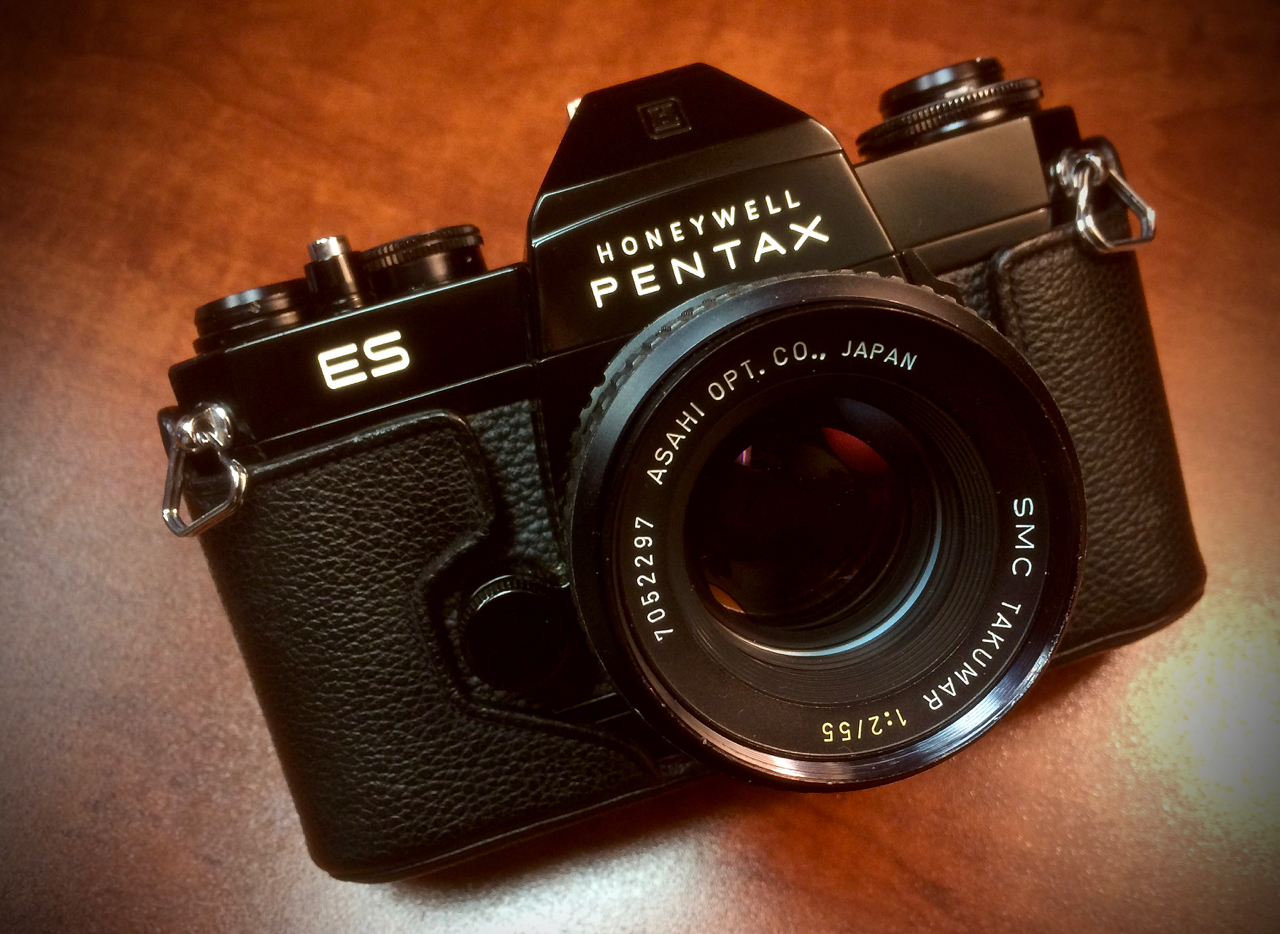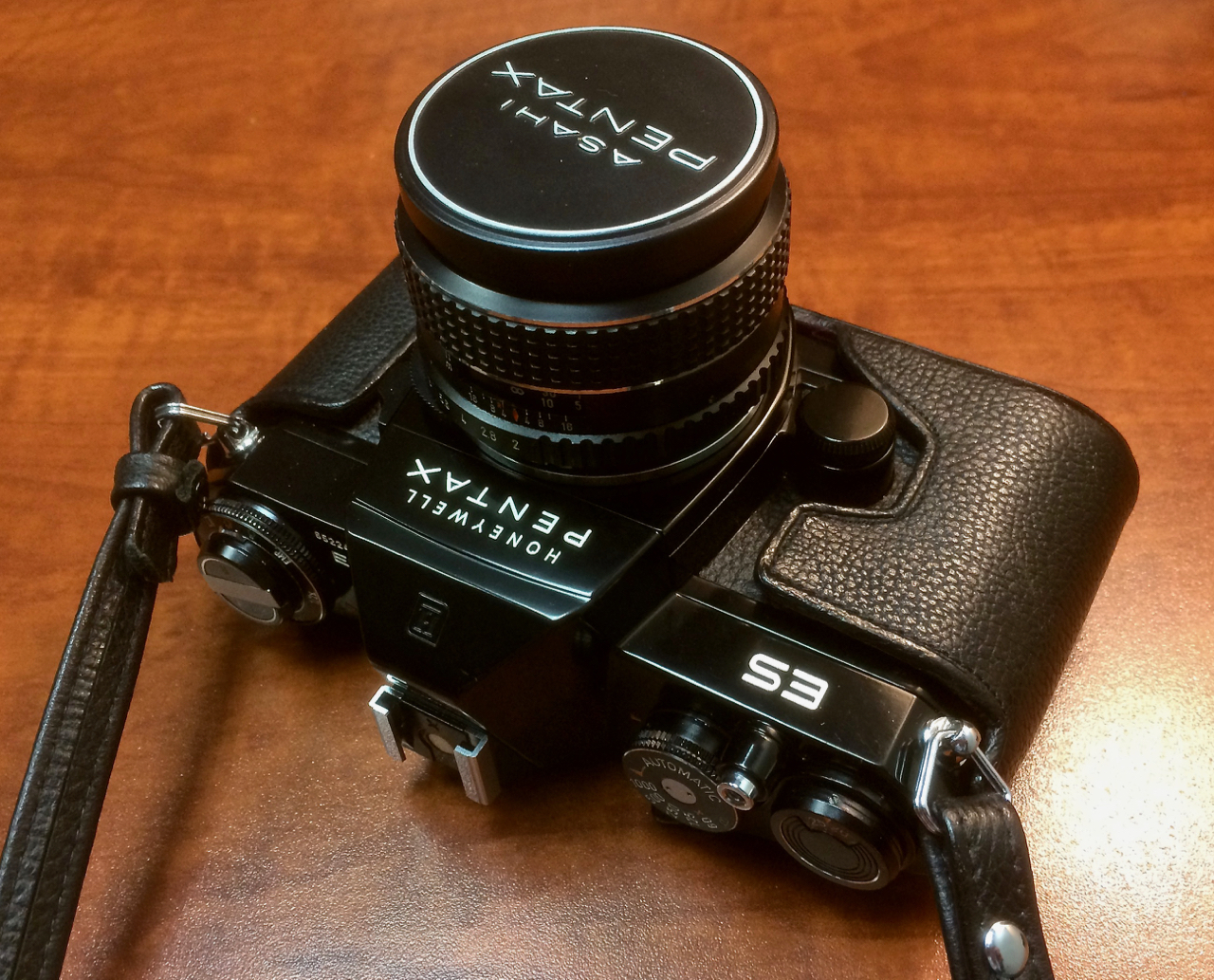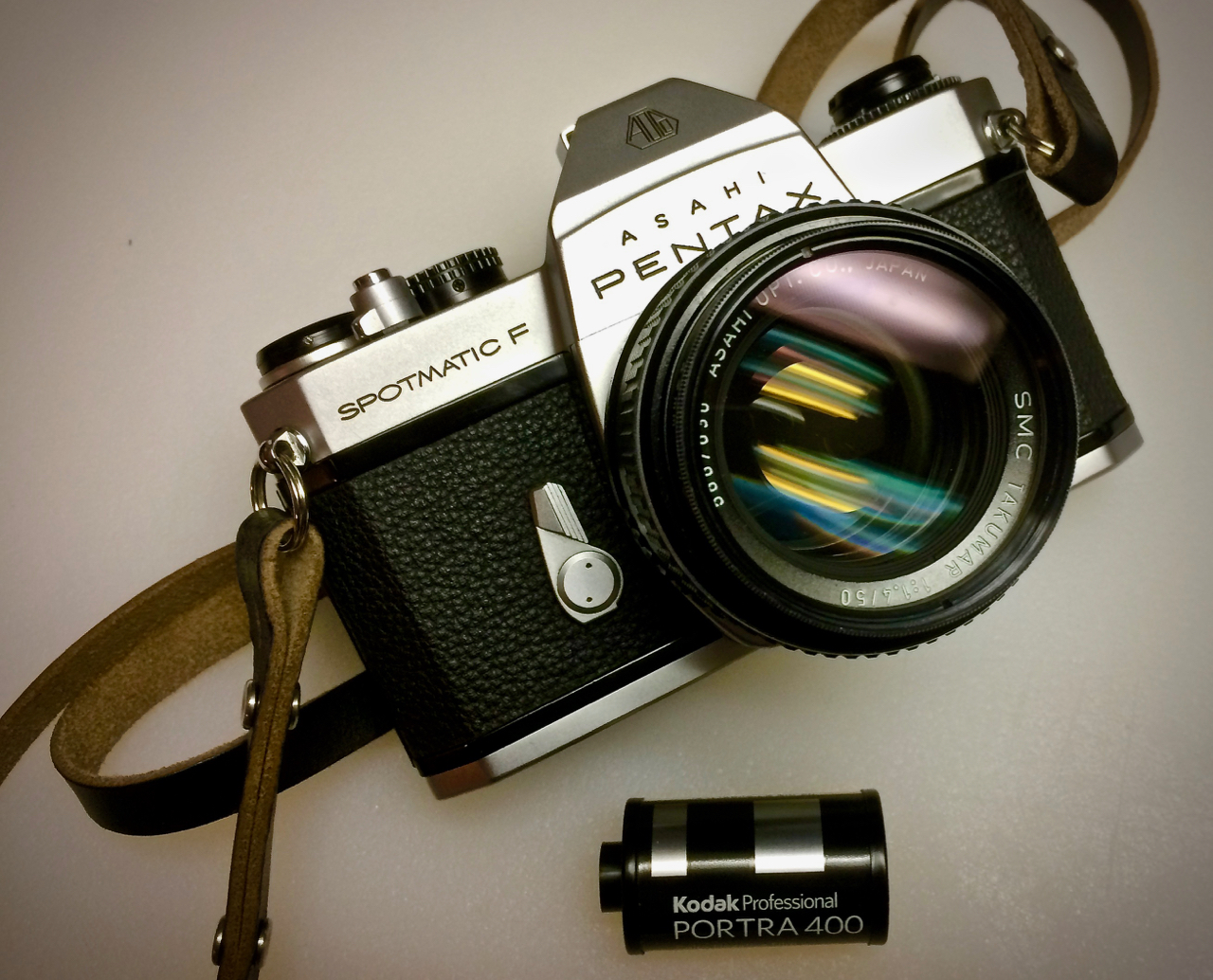The Pentax ES
I've written previously how I had preconceived negative notions about Pentax Spotmatic cameras. I had always dismissed them as primitive SLRs using unavailable batteries. Still, they intrigued me enough to casually shop them online. Because many Spotmatics are nearly five decades old, finding a decent one takes some effort and patience. Indeed, the first Spotmatic I bought on eBay arrived totally dead, infested with fungus and with a corroded battery chamber.
Being the good classic camera geek that I am, I soldiered on and eventually found a decent copy. And in the process of buying and shooting and buying some more, I've learned that these cameras aren't anything like my preconceptions. In fact, they're really very, very good...outstanding even! I learned that the battery thing is a non-issue. The Pentax Takumar lenses that screw onto the front of these things are downright amazing! And, if you can't tell by now, I've fallen head over heels for these Spotties!
I've now acquired and used most every variant; SP, SPII, SPF and ESII. The SP500 and SP1000 are just sub-variants. Completing the Spotmatic "circle of love" is the Pentax ES.
Pentax ES with SMC Takumar 55mm f/2
In 1971, Pentax introduced the world's first SLR with an electronically controlled shutter. Built on the already successful Spotmatic chassis and sold only in Japan, this camera would be called the "Electro Spotmatic." Like the Spotmatic F, the Electro Spotmatic had TTL open-aperture metering with Super Multi Coated and SMC Takumar lenses. There were bugs in the circuitry of the first Electros that were worked out by the time Pentax rolled out the camera worldwide with a totally new circuit board in 1972, just in time for Christmas. The camera's name was shortened to ES. Unlike the other Spotmatics, the standard body color was black and chrome was special order. The ES and later ESII bodies are about a quarter of an inch taller and six ounces heavier than a standard Spotmatic to accommodate the improved electronic circuitry.
I had an ESII for a while and it had some issues. It was a capable shooter but after a week or so, used or not used, the batteries died. And it needed FOUR 1.5v button cells housed in a small compartment under the lens mount. The battery compartment cover on my copy kept falling off. Too many quirks for me.
I acquired my ES from a friend who is retired from Pentax. It was a salesman's sample unit and probably never saw a roll of film.
The ES uses just one 6v #544 battery. I've shot three rolls of film with the ES and have had it for several months and so far, the battery is going strong. The battery compartment is on the front of the camera and to accommodate this, Pentax did away with the self timer. This isn't an issue for me. In 40+ years of photography, I've never once used a camera's self timer.
ES Top Controls
The ES features aperture-priority automation, which is my favorite kind of shooting. Set the shutter speed dial to AUTOMATIC, select your aperture and the ES will dial up the perfect shutter speed. It's a step-less shutter too, which means that if the camera computes the appropriate shutter speed to be 1/555th of a second or 1/112th of a second, that's what you'll get. This was razzle dazzle technology in 1972!
The one odd quirk about this camera is that if you shift to one of the five available manual shutter speeds, it disables the TTL meter completely, so it's aperture-priority or nothing. Again, I love aperture-priority photography, so this is not a deal breaker for me.
Unlike all of the other Spotmatic variants, lightly pressing the shutter release button activates the meter.. This is a feature I wish they added to the SPF. The viewfinder display shows you the shutter speed the camera's automation is selecting for you and like all of the Spotmatics, it's big and bright and Pentax wonderful!
On the ES, Pentax relocated the ASA selector to the rewind crank and I like it in that location. Battery check is easier too. Rather than setting ASA to 100 and shutter speed to B like the other Spotmatics, the ES features a simple battery check button.
Honeywell was the US distributor of Pentax cameras at this time. There is no difference between Asahi Pentax and Honeywell Pentax
The extra height and weight didn't bother me at all. Like all of the Spotmatics, the ES is well balanced and fits the hand well. I like shooting mine with the camera body nestled into the bottom half of the OEM case. Pentax used some pretty decent leather on these cases and most I've seen have really held up well. The original Asahi Pentax straps aren't bad either. They feature a gripper pad that prevents the camera from slipping off of your shoulder.
For the first test drive of my ES, I mounted my 55mm f/2 SMC Takumar lens and loaded some Kodak Portra 400. Testing a new camera is always a good reason for a walk on the beach.
Back home, a quick shot of my fireplace mantle in the late afternoon sun.
I enjoyed shooting the Pentax ES enough to invest in an Eric Hendrickson CLA, although outside of a bit of a stiff film advance, this 45 year old camera performed pretty darn well. This is a testament to Pentax quality during the Spotmatic era.
If you're considering M42 mount lenses, here's my overview of the Pentax bodies I've found most satisfying to use:
SP: My favorite of the early bodies because I love the pentaprism without the flash shoe. Truly one of the best looking of all the film SLRs. I keep a 50mm f/1.4 Super Takumar on mine all the time. You'll get used to stop-down metering...trust me. The Pentax SV-H3V that Paul McCartney is holding below is a predecessor to the SP.
SPF: As I mentioned above, if this camera's TTL meter was activated by a light shutter press rather than when it senses light over 2EV, it might just be my favorite film camera of all time. Keep the lens cap on between shots in bright light and you're fine. If you can find one with a split image focusing screen, grab it fast as they are rare!
ES: It's nice to have a Spotmatic body with aperture-priority automation. Yeah, I could buy the M42 to K-Mount adapter and shoot my screw mount lenses on my LX...but it just isn't the same. If you're considering one of these electronically controlled shutter bodies, stay away from the Electro Spotmatic. The circuit boards are finicky and no one I know still repairs them. Of the ES an ESII, the ES definitely gets my vote.










